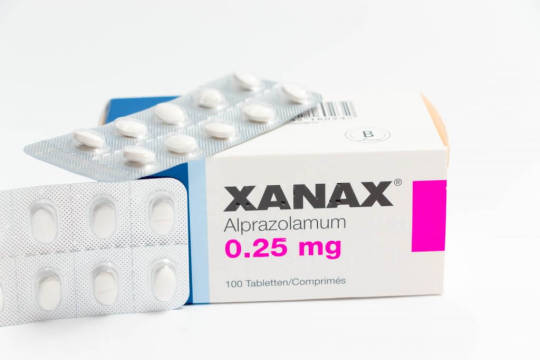#polysubstance abuse
Text
I need to abuse prescription or illicit stimulants rn or I will die
4 notes
·
View notes
Text

the cliff edge calls out my name
#mature#tw drvgs#tw vent#actually bpd#bpd vent#drvgs#polysubstance#spotify#bpd#anxiety#ptsd#substance abuse treatment#abuse survivor
11 notes
·
View notes
Text
Relapsed hard after being offered shit I just couldn’t resist but now I feel incredibly bad is it really this? The addicts cycle is to much to handle
#cluster b#bpd life#system#borderline things#bpd tag#bpd vent#tw substance abuse#cw substance use#oxycontin 80mg#substance addiction#addiction#drug addikt#substance use disorder#polysubstance use#substance use#substance abuse#bpdcodone approved
2 notes
·
View notes
Text
My special interest is fucking and also occasionally polysubstance abuse and also fast dance music and also interiors and also cleaning and also buffalo sauce
5 notes
·
View notes
Text
Mental Illness's...
Depression Disorders: Major Depression Disorder (MDD) / Recurrent Depressive Disorder / Bipolar Disorder / Seasonal Affective Disorder (SAD) / Mild, Moderate & Severe Depression.
2. Anxiety Disorders: Generalized anxiety disorder (GAD) / Social Phobias / Obsessive compulsive disorder (OCD) / Post-traumatic stress disorder (PTSD) / Panic Disorder / Agoraphobia / Specific Phobias / Social Anxiety Disorder / Emetophobia (fear of vomiting)
3. Neurological Disorders: Autism Spectrum Disorder (ASD) / Attention Deficit Disorder (ADD) / Attention Deficit Hyperactivity Disorder (ADHD)
4. Cognitive Disorders: Dyslexia / Learning Disabilities
5. Addiction: Polysubstance Abuse Disorder / Alcohol Addiction / Self-harming Addiction
6. Sleeping Disorders: Insomnia
7. Impulse Control Disorders: Trichotillomania (hair pulling)
8. Personality Disorders: Borderline Personality Disorder (BPD) / Antisocial Personality Disorder (ASPD) / Schizotypal Disorder (STPD) / Narcissistic Personality Disorder
9. Psychiatric Disorders: Dissociative Identity Disorder (DID) / Schizophrenia / Schizoaffective Disorder / Body Dysmorphia Disorder (BDD) / Gender Identity Disorder (GID) / Dissociative disorders (DD) / Delusional Disorder
10. Eating Disorders: Anorexia Nervosa / Bulimia Nervosa / Eating Disorder Not Otherwise Specified (EDNOS)
5 notes
·
View notes
Text
Introduction to Substance and Polysubstance Abuse
Disclaimer: This blog is not a promotion, advertisement, or encouragement to participate in the described activities. This post, and by extension, entire blog, are solely dedicated to the pursuit of knowledge and understanding.
Abuse of prescription medication, recreational drug use (such as legalized marijuana, as we have here in Canada), or any kind of substance (including a beer, or a coffee) can cause short or long-term health issues. Results can include addiction, heart or lung disease, stroke, cancer, hallucinations, impaired judgement, impulsiveness, loss of self-control, anxiety, depression, schizophrenia, psychosis, permanent brain damage, and death, depending on the type and quantity of drug administered. Effects of these substances are important to know to be able to avoid overdosing, and by extension, losing one’s life.
On top of this, it is also important to make note of fatal substance combinations that should never be practiced. Hopefully, spreading awareness on this will help to stop the 94% of opioid overdoses (Source: https://www.canada.ca/en/health-canada/services/publications/healthy-living/canada-opioid-crisis-fact-sheet.html) that are accidental.
Opioids/opiates + Alcohol. As both substances are nervous system depressants, taking opiates/opioids and alcohol at the same time runs the risk of dangerously slowing breathing until the point at which it stops. Source linked below.
Heroin + Cocaine. Snorting or injecting heroin and cocaine at the same time introduces one depressant (heroin) and one stimulant (cocaine) to the body at once. If the stimulant wears off too soon, the depressant can overpower the body, stop one’s breathing, and be fatal. Source linked below.
Fentanyl laced cocaine, xanax, or adderall. These mixtures are made to get customers addicted to the highly addictive fentanyl and continue coming back for more. However, the purity of fentanyl is not constant (according to Nabarun Dasgupta, PhD, epidemiologist at the University of North Carolina at Chapel Hill, https://abcnews.go.com/Health/fentanyl-deadly-drug-dealers-lace-illicit-drugs/story?id=96827602) and that causes fentanyl to be undependable in terms of what to expect. This makes it dangerous, and puts the consumer at risk for health complications or overdose.
An additional substance to be aware of is carfentanil. Supposed to be used as anesthetic for large animals such as rhinoceroses and elephants, carfentanil is 10,000x more potent than morphine and 100x stronger than fentanyl. Just 1 or 2 grains is fatal to humans. It is not intended, nor legal for, human use.
2 notes
·
View notes
Text
Creating a Relapse Prevention Plan For Xanax Addiction
Xanax addiction can be a dangerous and complicated situation to deal with. Many people end up addicted to this drug without realizing the serious side effects. The best way to overcome the condition is to learn about its causes, effects, and how to prevent relapse.

Physical dependence
Xanax is a prescription drug that is used to treat anxiety and panic disorders. It is similar to other benzodiazepines, such as clonazepam and diazepam. It may also be prescribed to treat depression, premenstrual syndrome, and agoraphobia.
Xanax is a highly addictive drug, and abuse of it is dangerous. It causes a variety of negative effects, including withdrawal symptoms and psychosis. It also slows down the functioning of the spinal cord and brain. It has a short half-life, meaning it will take more of the drug to feel the same effects. It can cause life threatening withdrawal symptoms if abused in large amounts, or if taken with other drugs.
It is common for people who use Xanax to go to a lot of trouble to obtain the drug. They will try to find it in different places, or may crush a legitimate prescription. They may even visit several doctors to obtain more Xanax. They may also be tempted to mix it with alcohol, a polysubstance, which increases the risk of severe withdrawal symptoms and possibly death.
Taking Xanax can alter the reward center of your brain, and it can also alter your sleep cycle. The reward center releases dopamine, a neurotransmitter that makes you feel good. It also trains your brain to repeat the behavior that caused the release.
Relapse prevention and management
Xanax addiction is a complicated disease with many factors to consider. However, with a little bit of planning, recovery can be a reality. In this article, we'll talk about how to create a relapse prevention plan to help you stay on track. Whether you have already been struggling with Xanax addiction, or you're just starting down the road to recovery, you'll be surprised at the steps you can take to protect yourself.
In a nutshell, relapse prevention involves taking a look at your life and figuring out what is triggering your use of alcohol or drugs. This may include things like stress, fatigue, or social situations. It's also important to identify your coping skills and learn how to manage them in order to prevent relapse.
One of the most important steps is creating a relapse prevention plan. Using Cognitive Behavioral Therapy, a therapist can help you develop strategies for avoiding relapse. This is a step-by-step process that helps you recognize your triggers and develop a plan to deal with them.
There are several relapse prevention techniques, including mindfulness and meditation. These practices will improve your mental and physical health. They're also a great way to de-stress.
Another relapse prevention strategy is to get involved with a support group. These groups can be an invaluable source of social and educational support, as well as accountability.
Side effects
Xanax is an addictive drug that can cause side effects when used incorrectly. It is a benzodiazepine, which is commonly prescribed for anxiety and seizures. However, it can also be deadly when used in combination with other drugs. It is one of the most addictive drugs in the United States.
Xanax can cause long-term health problems, including memory loss and depression. It may also lead to delirium and psychotic episodes.
Xanax can cause an overdose, which can be fatal. It is also dangerous to mix Xanax with other substances, which can cause negative drug interactions. It is important to seek help if you suspect you have an addiction to Xanax.
Xanax can also cause neonatal abstinence syndrome in babies born to a mother who was addicted to Xanax. This can have long-term health implications for the baby, and can interfere with maternal-child bonding.
Xanax can be physically addictive when used over a long period of time. Xanax causes changes in the reward center of the brain. When this area is altered, people may have positive associations with the drug. These changes can also result in long-term issues with attention.
Xanax can also affect the brain's metabolism, which can lead to sedation. Alcohol can exacerbate these effects. Benzodiazepines have a high rate of abuse.
2 notes
·
View notes
Text
just got back from my pcp to discuss medical marijuana! she was OK with it but said she could not approve it because you need an MD and she’s a nurse practitioner. she did however give me a list of my diagnoses and i have *four* conditions on there of the 18 that our state requires for a card (you only need one)
only thing i am worried about though is that shitty nurse practitioner i was seeing before for psych meds put down “polysubstance abuse” on my list but it was because i was smoking weed! i’m on two controlled medications from doctors who have seen this list so i’m guessing it probably won’t be an issue?
anyway so now i’m going online to set up the appointment at the marijuana clinic… hopefully i can get in tomorrow and then in two weeks or so get my card! i already have a strain from the local dispensary picked out and everything
#its green crack btw#ive had it before and its perfect for me#not sure if i’ll get 1/8th or 1/4th of an ounce though#ted.txt
5 notes
·
View notes
Text
I always forget how bad the winter makes me miss doing benzos and benadryl benders til it comes back around ;((
0 notes
Text

nintend blow
#mature#tw drvgs#tw vent#actually bpd#bpd vent#drvgs#polysubstance#spotify#abuse survivor#art#trippy#triggering content#addiction#sadgirl#borderline personality disorder
7 notes
·
View notes
Text
I feel like ppl talk about addiction but not polysubstance abuse in particular, which leads to a lot of dangerous situations for people using. Like I’ve seen so many people mix xanax and alcohol and I always try to warn them that this is a potentially fatal combination due to the fact that they are both CNS depressants. And if someone u know uses heroin & is also on benzodiazepines, the risk of respiratory distress heightens AND naloxone becomes less effective in the case they OD. So yeah just be aware of interactions and check on your friends
3 notes
·
View notes
Text
The effect of mixing alcohol with other drugs (multiplier effect of alcohol), whether recreational, over-the-counter, or prescription medication could cause potential harm to your body.
Nonetheless, it is no longer news to abuse several drugs at a go just to chase the ‘high’ or even take sleeping pills and other medication with alcohol. People do this often without understanding the danger they put themselves into.
For this reason, this blog will answer a rather common question; what is the multiplier effect of alcohol and look into common risks that are associated with it?
What is the multiplier effect of alcohol?
Also known as the synergistic effect of alcohol, it is the resultant effect of combining alcohol with other substances which is greater (more severe) than the sum of the individual effects of each substance abused.
For instance, one glass of alcohol combined with a street drug can lead to an effect equal to having ingested three glasses of alcohol.
Simply put, the multiplier effect, as the term suggests, is a double reaction to the substances combined. These effects differ depending on the type of drugs consumed and can be fatal.
How long the effects last in your system is also dependent on the type of drugs and other physical factors such as body fat content, quantity ingested, metabolism, genetics, and hydration among others.
Common drugs mixed with alcohol
The abuse of two or more substances is known as polydrug or polysubstance abuse. Below is a list of common drugs abused with alcohol and their synergistic effects:
Stimulants
Stimulants such as Adderall, Ritalin, and Concerta are often mixed with alcohol to lessen the depressive effects of alcohol.
This is based on the misconception that stimulants and depressants rule each other out. Therefore, one would hardly know their level of intoxication.
However, the combination increases the lethal effects of both drugs and can lead to impaired judgment and motor coordination, blackouts, and due to the possible risk of overconsumption, a fatal overdose.
Other heart-related effects include high blood pressure, arrhythmia, heart attack, increased heart rate, and stroke.
Cocaine
The combination of cocaine and alcohol forms a substance known as cocaethylene in the body. This compound increases pressure and stress on the heart which may lead to cardiac arrest and eventual death.
A study done by a wellness center at Santa Clara University proves that cocaethylene increases the heart rate three to five times more than either of its components would.
Caffeine
Energy drinks contain caffeine which promotes mental and physical stimulation in the body. This way, they manipulate the body to be more energetic and could easily lead to overconsumption when mixed with alcohol.
The combo also predisposes your body to extreme hangovers and alcohol poisoning since too much caffeine dehydrates the body.
Opioids
Although opioids can be used as prescription medication for pain, their abuse trigger drowsiness, impaired breathing, motor control, and even death.
Mixing them with alcohol intensifies these side effects including cardiovascular problems, coma, and potential overdose which can lead to death.
Commonly abused opioids with alcohol include Heroin, Percocet, Vicodin, and Fentanyl.
Marijuana
Marijuana, also known as cannabis, contains a compound called tetrahydrocannabinol (THC) which is responsible for its psychoactive effects.
Alcohol amplifies the concentration of THC in the blood and, therefore, intensifies the marijuana high. Other related side effects from the abuse of marijuana and alcohol include:
Impaired judgment
Numbness
Impaired motor control
Memory loss
Mood swings
Ecstasy
Studies from Santa Clara University reveal that Ecstasy causes dehydration. When mixed with alcohol, their individual effects overlap to cause intense dehydration and alter the normal functioning of the kidney.
It also increases the risk of alcohol poisoning and overdose since one is unable to gauge their alcohol intake.
The majority of ecstasy and alcohol abusers engage in irrational behavior such as unprotected sex and driving under the influence.
The combo also leads to high blood pressure, panic attacks, fainting, seizures, and potential cardiac arrest.
Meth
Crystal meth, or ice, is a strong stimulant that causes euphoria and is highly addictive. Due to its chemical composition, ecstasy has no medicinal purpose.
When abused with alcohol, they increase blood pressure and put a strain on the heart muscles and hence, birth heart-related condition. The two intensify hangovers and cause severe damage to the kidney when taken frequently.
Antidepressants
Antidepressants, such as bupropion, and the most abused depressant, alcohol, increase user intoxication and can cause intense mood swings. This makes them the worst combination for a patient suffering from depression.
Antibiotics
Although it has not been scientifically proven, alcohol may make antibiotics less effective. Consumption of the two is accompanied by symptoms such as blood pressure fluctuations, headaches, gastrointestinal upset, rapid heartbeat – a condition known as tachycardia, and damage to the liver.
Other prescription medications
Drinking alcohol together with prescription medication, such as flu meds, angina meds, arthritis, cholesterol, and diabetes meds, among others, amplifies the following synergistic effects:
Tachycardia/ rapid heartbeat
Arrhythmia/ irregular heartbeat
Nausea and vomiting
Unstable blood pressure
Headaches
Skin flushes
Cardiac problems
Memory loss
Drowsiness and dizziness
Mood swings
Seizures
Besides physical and emotional side effects, the multiplier effect is a major propagator of crimes, such as sexual and physical assaults, when the victim is indisposed.
Why is it harmful to combine alcohol with other drugs?
Besides causing the multiplier effect, the interaction of these chemical compounds increases the risk of further complications for individuals with underlying medical problems.
It can also lead to multiple drug addictions from frequent abuse of different drugs and drug dependency. This makes the treatment process a lot harder than when treating addiction to a single drug.
In the long run, mixing alcohol with other drugs only increases the negative effects of the drugs and pauses a great health hazard rather than only increasing the high. It is advisable to steer clear of such episodes.
However, if you do or suspect someone may have put something in your drink, reach out to a pharmacist for professional advice on how to deal with the situation.
0 notes
Text
Antonio Velardo shares: Polysubstance Abuse Making Treatment Difficult by Unknown Author
By Unknown Author
Polysubstance Abuse Making Treatment Difficult
Published: November 10, 2023 at 01:01PM
from NYT Science https://ift.tt/mjOGcRL
via IFTTT

View On WordPress
0 notes
Text
.
my system are letting me do benzodiazepines recreationally!!!! :D :D :D
we're prescribed them and got dependent on them in 2015 partly due to irresponsible prescription, partly due to us abusing them and becoming a polysubstance addict, but now we're at a point where we don't feel the need to abuse a ton of substances (just one) so anything but weed we can do in moderation.
and since our current psychiatrist tells us to take one every night to stay out of withdrawal (that's the actual reason) and also one as needed for anxiety (which isn't every day, nor most days), we're taking it literally every day and our doctor thinks that's the right thing to do.
so since we're taking it every day already and since we can make rules about its use similar to how we have rules about alcohol use to keep us from drinking too much, and since we've never had trouble following the alcohol rules, the rest of the system sees no reason why i (and the rest of us) shouldn't be allowed a recreational .5mg tablet up to once per day, up to three days per week!
i might be allowed to take more than .5mg per day of use, but we're going to start with one dose of that size per day. and i'm obviously not going to consume it with alcohol (but can do so with weed).
a large part of it is that i have the extremely strong drive to Do Drugs and particularly ones other than weed or alcohol, but Other Drugs are either inaccessible to us and/or ones we've sworn off doing and that would frankly make everyone really worried if we did them again.
benzos, however, are different, because we're taking them every day already and they don't really have any (conclusive proven) negative effects that we haven't already suffered, and it's clear we can handle at least some addictive substances if we set rules about their use, so in our case there's really nothing to lose in taking .5mg clonazepam during the day up to three days a week if we're taking it every day at night anyway not to sleep but to not be in withdrawal.
i'm going to watch out to make sure this doesn't become a problem, but!! i'm allowed to do more drugs now!!!!
0 notes



